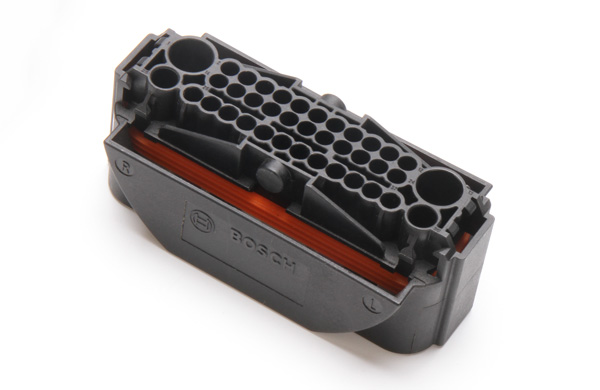In the field of injection molding, when we closely observe finished products made of materials such as ABS, PP, and PC, it is not uncommon to find white or shiny marks on their surfaces. These phenomena, commonly known as "light marks" or "skeleton marks," are actually caused by internal stress. Especially stress marks from ejector pins, inserts, and thickness variations, although these defects may diminish over time, exploring their root causes is crucial for improving product quality.
Firstly, the design of the product's structure is one of the primary factors contributing to stress marks. Sudden changes in product wall thickness, especially when there are significant differences in thickness, can lead to uneven distribution of internal stress during the molding process, resulting in stress marks.
Secondly, the design and condition of the mold also play a key role in the formation of stress marks:
Gate Design: Irregular stress marks often appear near the mold gate, while areas with ejector pins and angled ejectors are more prone to stress concentration due to complex force distributions.
Insert Fit: If inserts are not tightly fitted, prolonged filling time under high pressure during injection molding can cause the inserts to loosen, generating stress.
Mold Precision and Assembly: Deformation of the mold itself or improper assembly, such as slight deformation of the ejector plate or slight retraction of ejector pins and blocks, are potential causes of stress marks.
Cooling System: Overheating or uneven cooling of certain mold areas, especially when the cooling channels are far from the stress mark locations, can exacerbate stress formation.

Lastly, molding process parameters and material characteristics are also significant factors:
Holding Pressure Parameters: As holding pressure and time increase, stress marks appear in a certain order: first in areas with thickness variations, then in ejector pin and angled ejector areas, and finally in irregular stress marks near the gate.
Cooling Process: Stress marks on flat or curved surfaces often result from sudden changes in wall thickness leading to inconsistent cooling rates. During the cooling process, the external part of the plastic cools first, generating tensile stress on the internal part, which intensifies stress mark formation.
Process Conditions: Excessively high holding pressure, low mold temperature, or low material temperature can increase the risk of stress marks, as these conditions are not conducive to uniform plastic flow and effective relaxation.